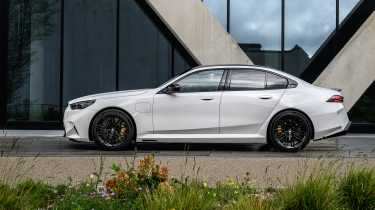New emissions tests could close PHEV tax loopholes
Get that new BMW M5 company car in quick…

Changes to the way new cars are tested and homologated could shake up the stated emissions and efficiency figures of plug-in hybrid cars, with possible implications for how they’re taxed.
Outgoing testing procedures are favourable to current plug-in hybrid cars, often delivering efficiency and emissions figures well below what the cars actually produce in real-world use cycles. The new Euro 6e-bis testing procedures are designed to combat this, substantially increasing simulated testing distances from 497 miles to 1367 miles.
The International Council on Clean Transport (ICCT) used a BMW X1 xDrive25e as a guinea pig, finding emissions figures that doubled under the new test conditions from the current stated 45g/km figure, to 96g/km. A further Euro 6e-bis-FCM procedure covering 2647 miles is set for 2027, which could see further jumps. Just applying the 96g/km figure to Benefit-in-Kind company car tax rules, the X1 would move from eight per cent, to 24 per cent, eliminating the hybrid ‘advantage’ over standard petrol cars.
The ICCT said: ‘Over the past several years, it has become evident that the currently used UF curve does not reflect the real usage of PHEVs resulting in unrepresentatively low official CO2 emission values. This leads to an excessive gap between the real-world fuel consumption and the official value determined during type-approval.’

For now, the testing is only set to apply to new models launched from 1 January 2025, before spreading across to all cars that are on sale from 31 December 2025. Performance changes will differ from car to car, but assuming a doubling of figures is the least we can expect, with the likes of the new BMW M5 and hybrid Bentleys likely to jump from under 40g/km to the 60-90g/km range.
That would mean a higher first-year car tax registration figure – possibly doubling for the M5 – but also a jump from the eight per cent 2026 BIK band, to the 21 per cent band for the M5 and 18 per cent band for the Bentley, at minimum. No small change for cars costing as much as these.
PHEVs with bigger batteries and longer electric ranges like the BMW (42 miles) and Bentley (50 miles) will, in theory, be less affected - though the extra miles of V8-only driving during the test could cancel out the advantage.




